Five souls, one territory
The winery's vineyards are located within the perimeter of two municipalities, within two DOCGs and in which five large wine-growing areas measure a total of about 50 hectares. Each with distinctive microclimatic characteristics that are a direct expression of the wines produced from vineyard to vineyard.
Terroir and wines
The influence of terroir in wines is an asset, and the variety of altitudes and microclimates result in different wines, each an expression of the vineyard of origin.
All of the winery's vineyards are on hillsides or terraced slopes with varied exposures but all characterized by conditions that guarantee the best yields in terms of quality.
Some of the vineyards are historic plantings, with vines over half a century old. The most vocated ones have been chosen to become true crus with the aim of maximizing the special conditions of the microclimate, soils and rootstocks planted.
Dominating the scene among the estate's grape varieties is certainly Sangiovese Toscano, present in several varieties with some clones, taken directly from the historical plants of the most ancient vineyards. Other traditional regional grape varieties find space in our soils: Malvasia Bianca and Trebbiano for the white grapes, Canaiolo and Colorino for the black ones.Rounding out the spectrum of grapes are the international Merlot and Petit Verdot and the distinctive Pugnitello, an indigenous variety of Tuscany that has found its own vocated location, in the Vigna della Cipressa vineyard in San Donato in Poggio.
Campoli and Belvedere
San Casciano val di Pesa (FI)
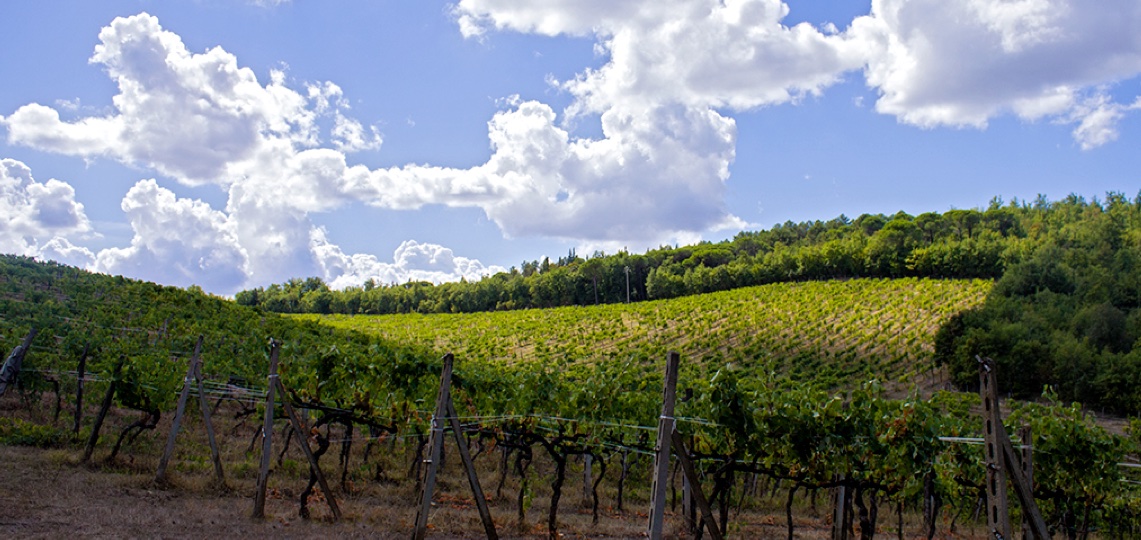
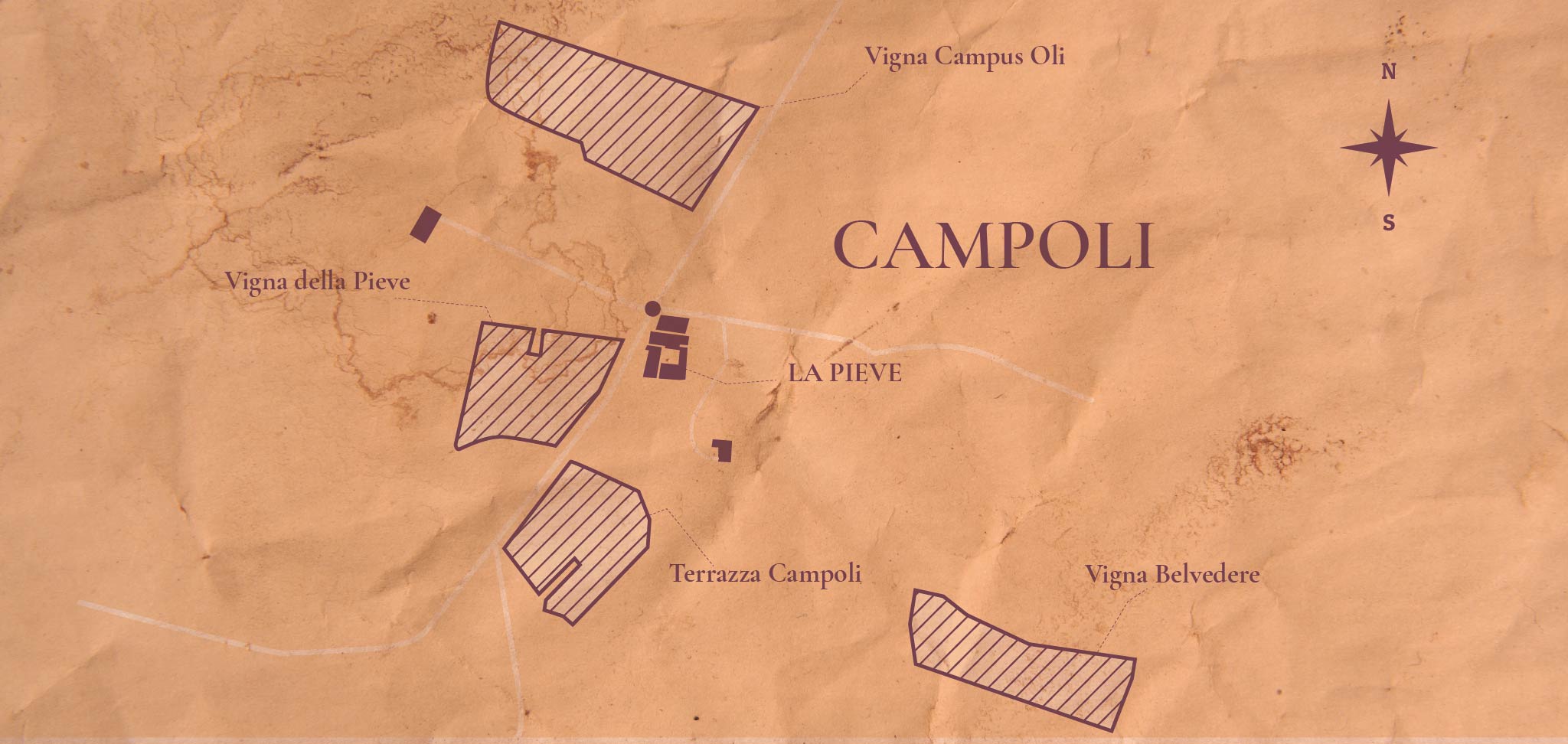
Near the Pieve di Santo Stefano in Campoli, three vineyards are located where the highest, near Belvedere, stands at 398 meters above sea level while the bodies bordering and in front of the church are between 325 and 355 meters above sea level, facing E/W for a total of 5 hectares. The soils consist largely of Pliocene conglomerates, gravels and sands in the lower parts and in marly and limestone soils in the higher parts bordering the promontory of Poggio La Croce. Unique grape variety is Sangiovese, which was recently replanted in 2020 on the entire extension.
Completing the Campoli area are the vineyards of Cicaleto, Loccaia, Selva, Tignanello and San Gaudenzio a Campoli. Fruit of an almost 100-year collaboration between the Church and the Antinori family.
San Donato in Poggio
San Donato in Poggio Barberino - Tavarnelle (FI)
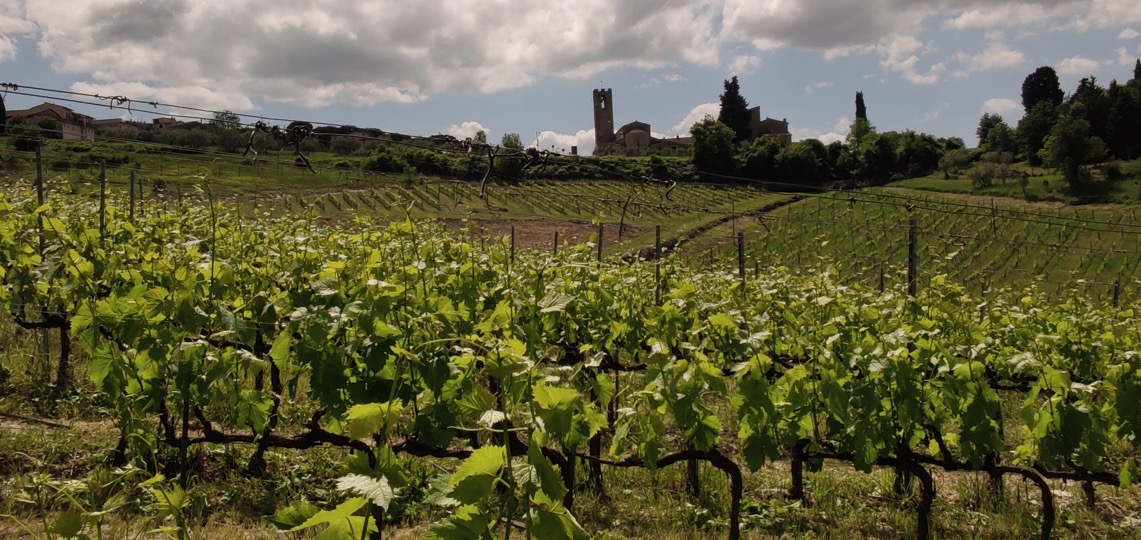
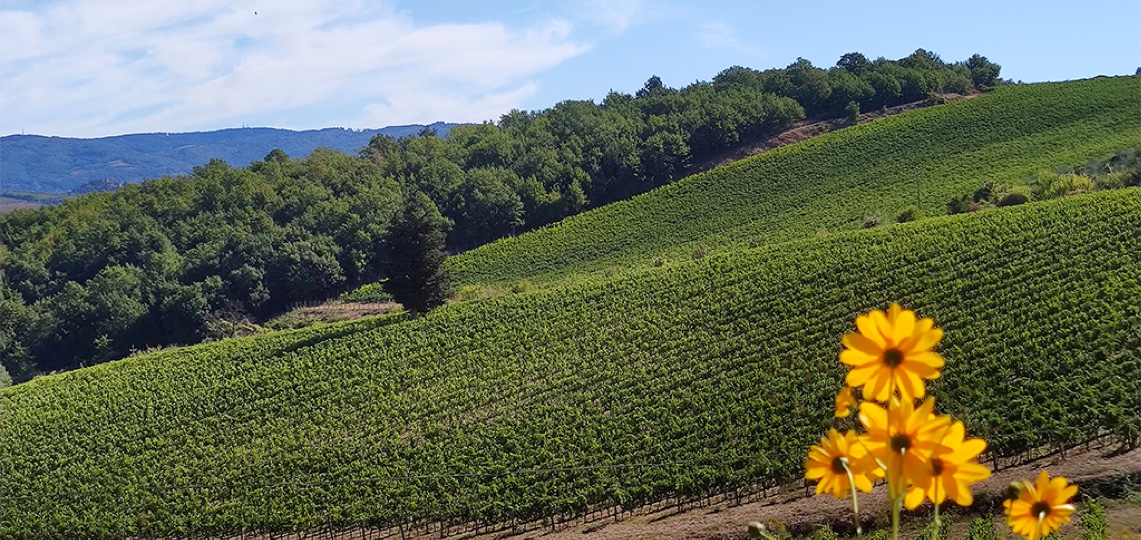
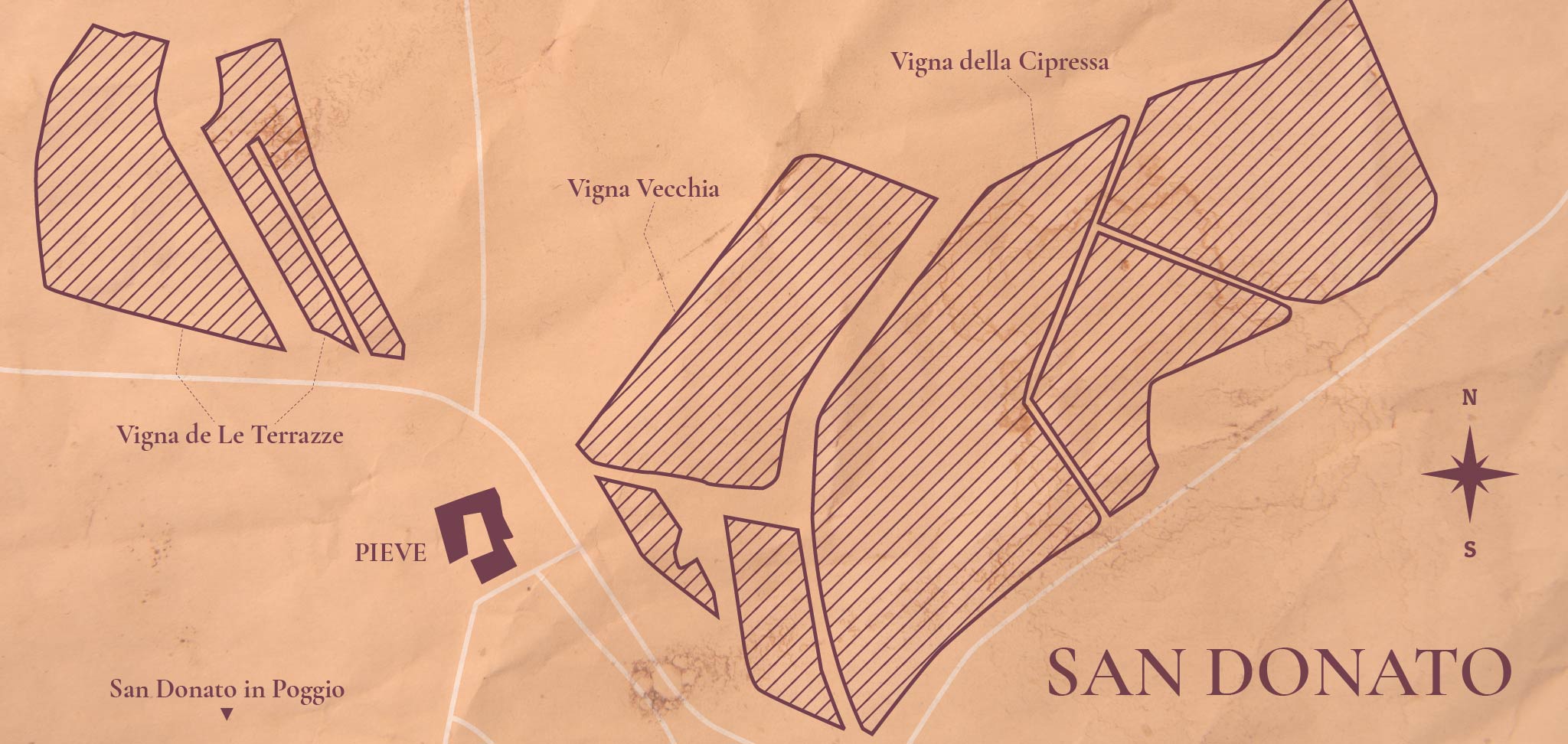
One of the farm sites of central importance is located near the small and beautiful medieval village of San Donato in Poggio recently included by the Chianti Classico consortium in the new Additional Geographical Units and where there are 3 vineyard bodies totaling 8 hectares. The first two, very close to the village and planted in 2002, are the Vigna delle Terrazze and the Vigna della Cipressa: the latter is now an iconic symbol and a landscape of rare beauty overlooking the upper valley of the Pesa stream. Both plots face S/SE and enjoy excellent sun exposure, although there are different microclimates due to the considerable elevation difference and the influence of the nearby valley.The elevation ranges from 400 to 334 mt a.s.l. at the lowest point of the valley floor, the soils are predominantly clayey with the presence of alberese rock shale in the upper parts of the hillside, the form of farming is spurred cordon. The soils are predominantly cultivated with Sangiovese, followed by Petit Verdot in the lower part of the hill of the Cipressa Vineyard, along with Colorino e Pugnitello. On the opposite side of the vineyard, we find the Old Vineyard, one of the historical plots where there are several rows of "promiscuous" divided into Sangiovese, Trebbiano, Canaiolo bred in cordon and according to the form of the "Tuscan capovolto".
Molinuzzo
Barberino - Tavarnelle (FI)
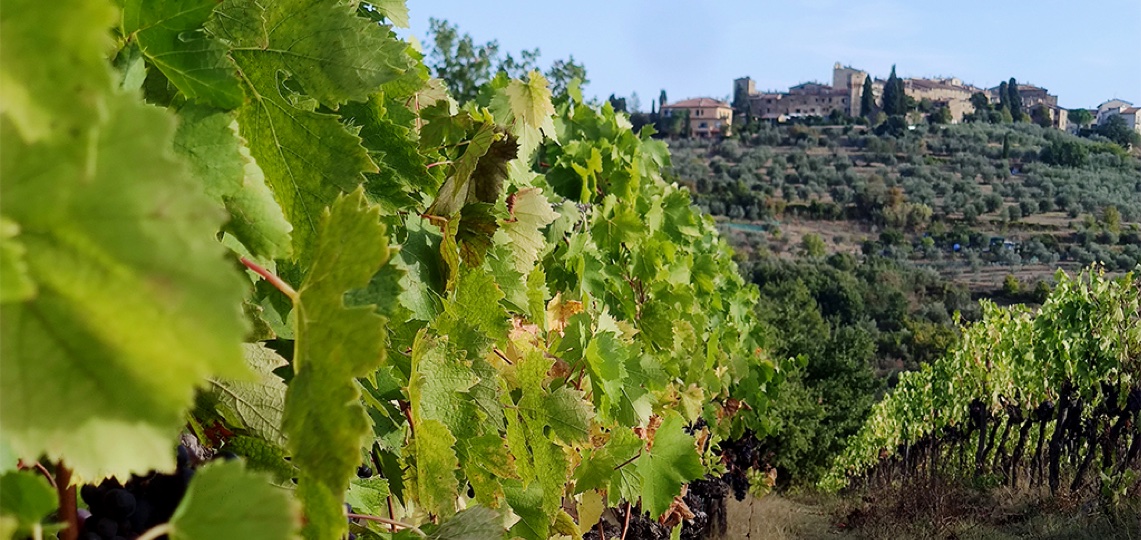
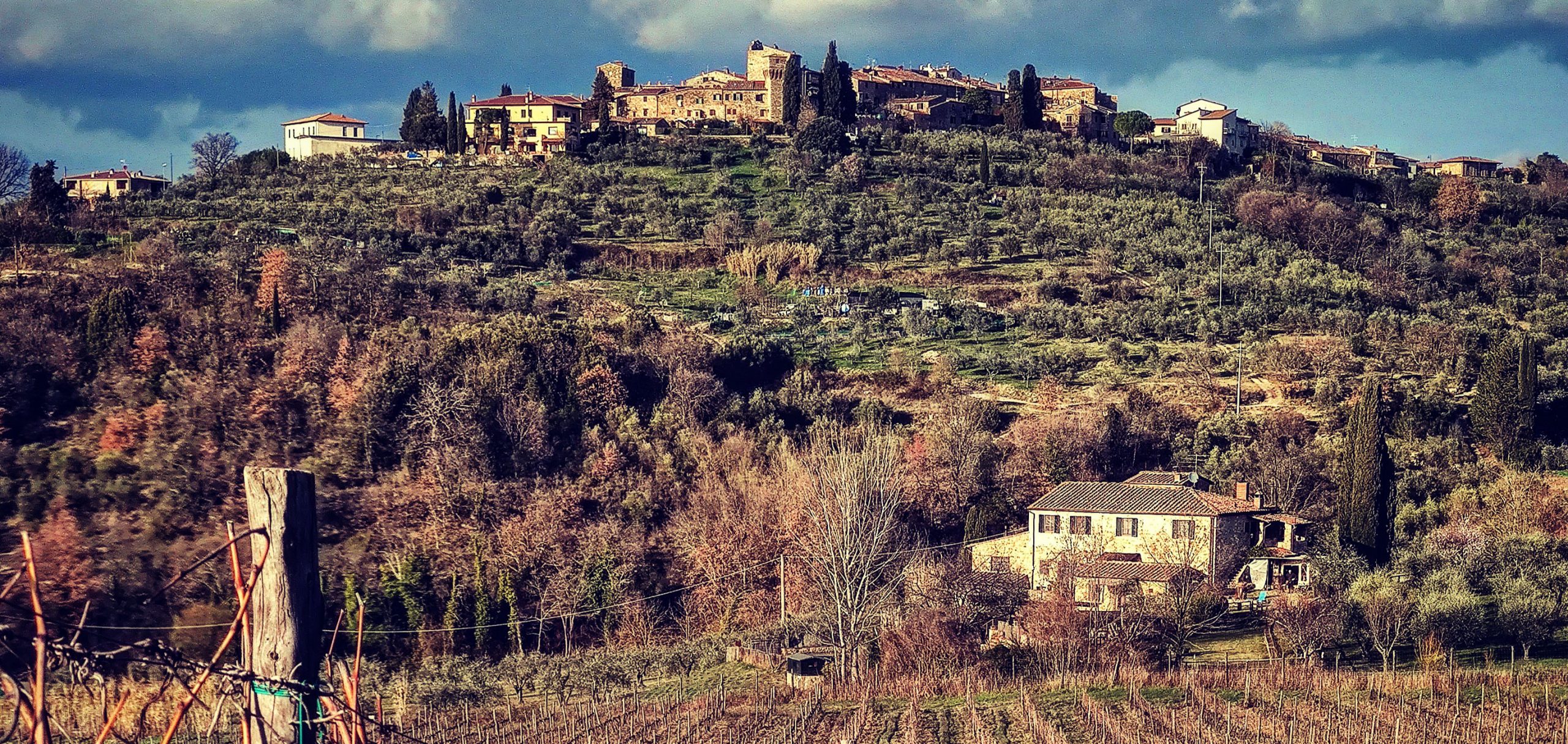
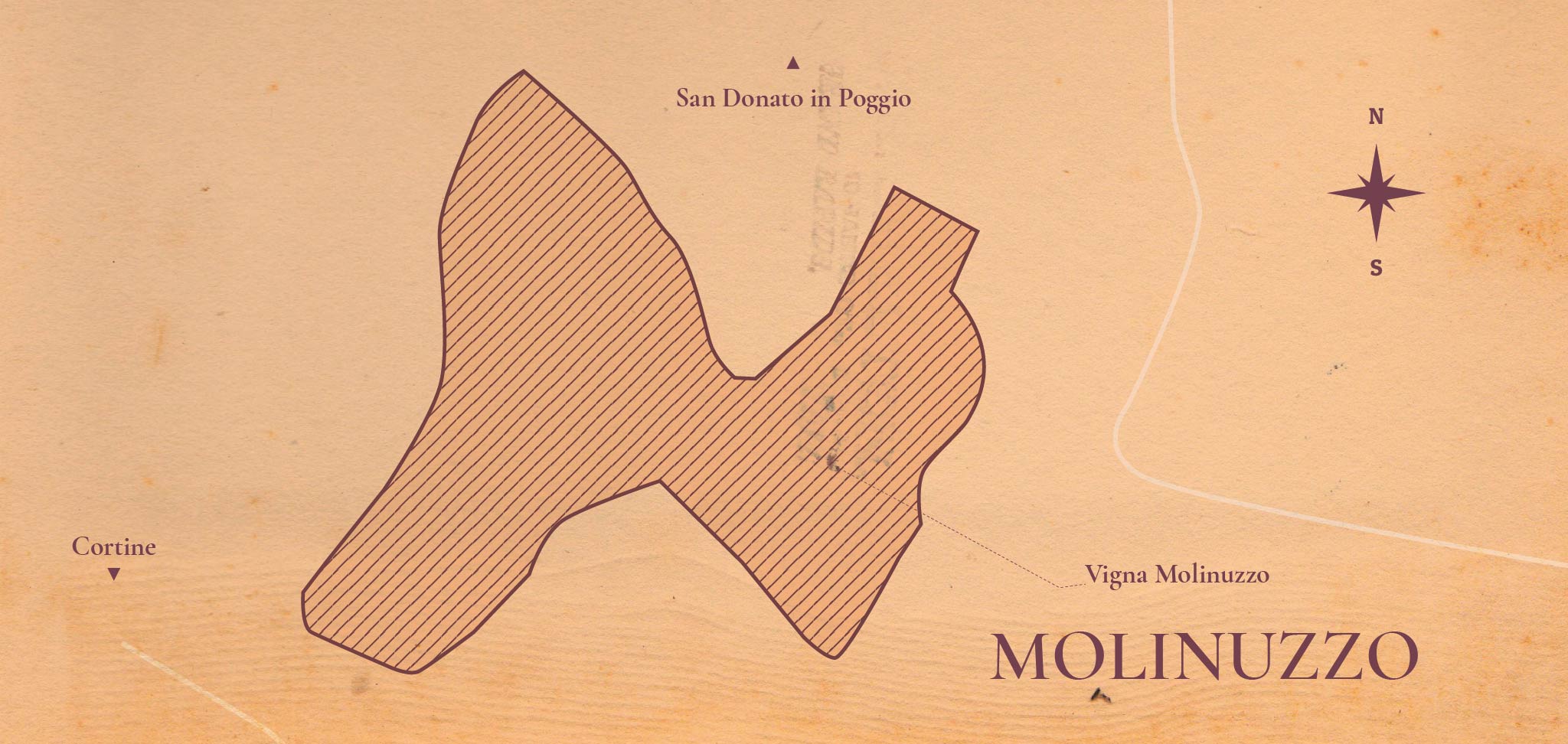
On the side opposite the perimeter of the walls of the village of San Donato, we find the vineyard of Il Molinuzzo. The vineyard is one of the largest bodies of the farm with an extension of 4 hectares and planted in 1998, it is located facing S/O on a hill with an elevation difference ranging from 371to 335 meters above sea level, where a soil composed mainly of clay and alberese, is mixed at the bottom of the valley with ferrous sands that give a characteristic color to the soil in line with the tone of the pigments of the Terra Rossa di Siena.
The unique training form is the spurred cordon, while the vines are mostly Tuscan Sangiovese, Merlot, a few heads of Trebbiano. The influence of the nearby forest, strongly mitigates the exposure by generating a considerable temperature range, between the parts reached by the sun's rays at various times of the day, giving rise to a unique microclimate and partly adverse to the quantity of production but not but the quality level of the plants, which especially in the clones of Merlot, find their most congenial location there.
Curtains
Barberino - Tavarnelle (FI)
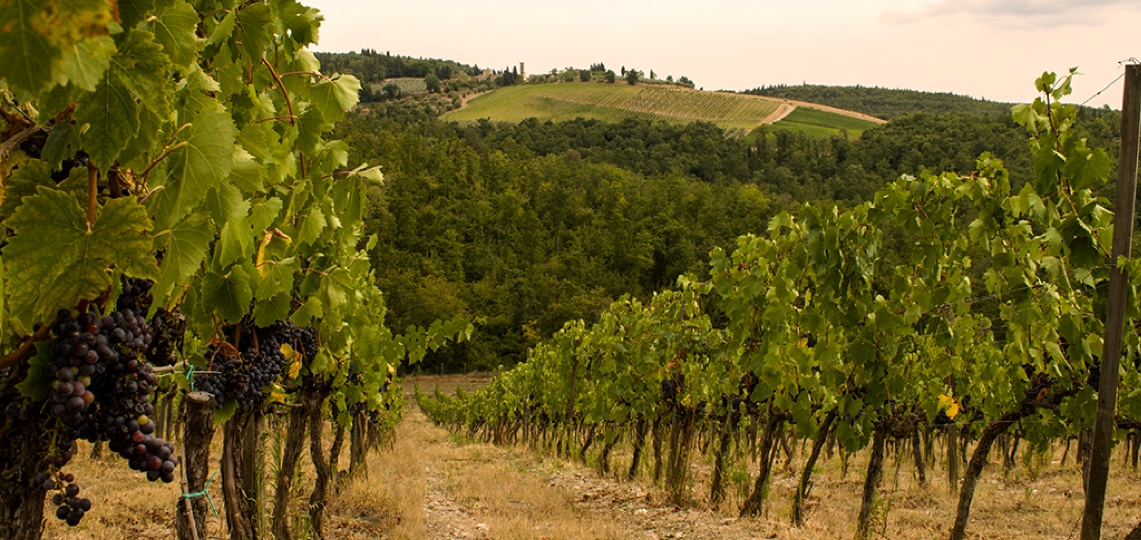
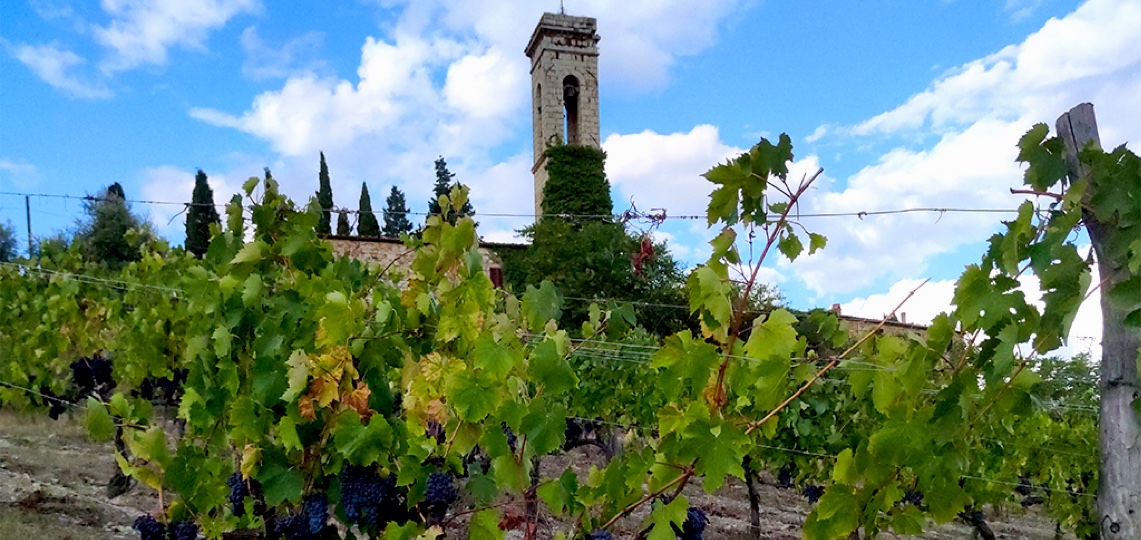
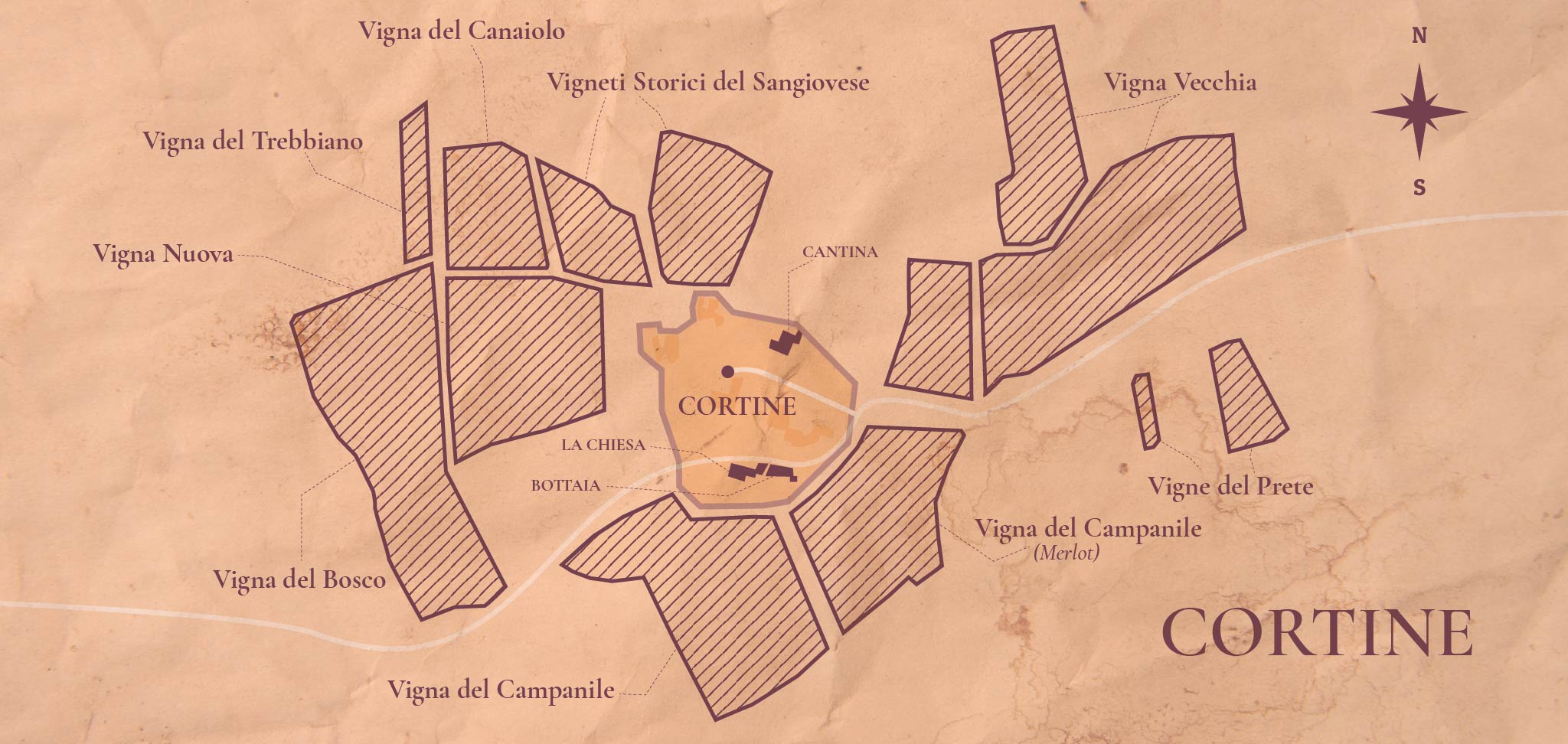
Cortine is the other strategic location for the company; it is home to the winery and thefarmhouse accommodations.
A place of rare beauty, set on a hill surrounded by woods in the commune of Barberino Tavarnelle, in the very heart of the Chianti Classico region between the provinces of Florence and Siena, sees a small archipelago of plots develop around the central hub of the iconic Canonica di Cortine. As many as 13 plots, some ready for replanting, others jealously preserved, surround the entire area and are home to some of the most prestigious crus and for which an exclusive label line, the Cortine line, has been created.
The area, included in an elevation ranging from 308 to 370 meters above sea level, is largely resting on top of a hill of alberese clay shale which sprout in virtually every vineyard around the winery and which change as you move away toward the main road, becoming pure clays and sands. The vines grown, according to the training form of the spurred cordon, are Sangiovese in almost the entire area and to a much lesser extent, Trebbiano, Canaiolo, Malvasia e Merlot. Special mention, for the crus of the Bell Tower Vineyard, the recent planting of the Vigna Nuova and in general for all the small historical plots, some cwith vines over 50 years old that help create the blends of the various Chianti Classico, the Riserva and the Gran Selezione of the Cortine line.
Agnola Vineyard
San Casciano val di Pesa (FI)
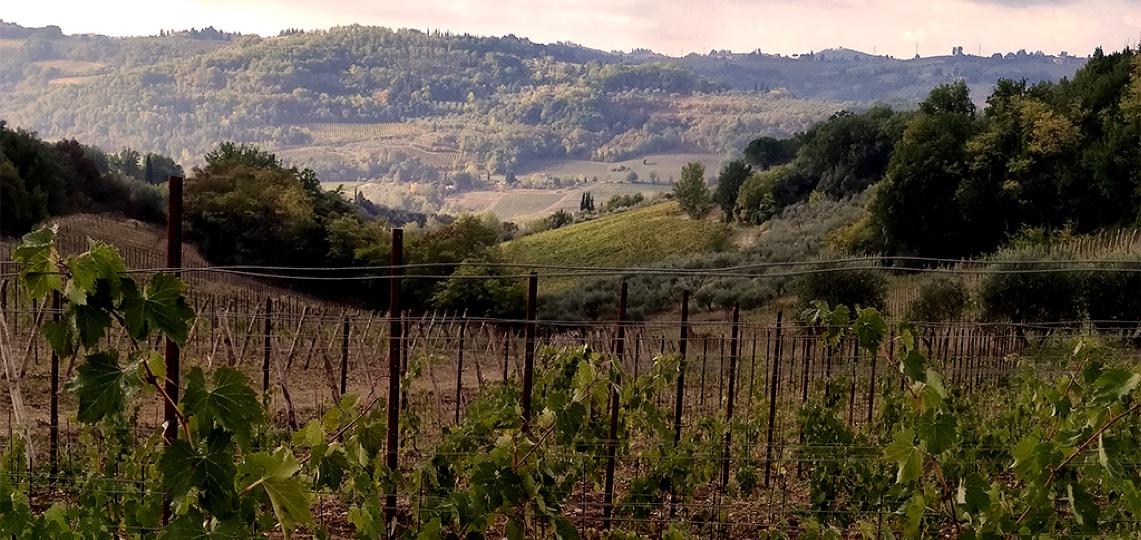
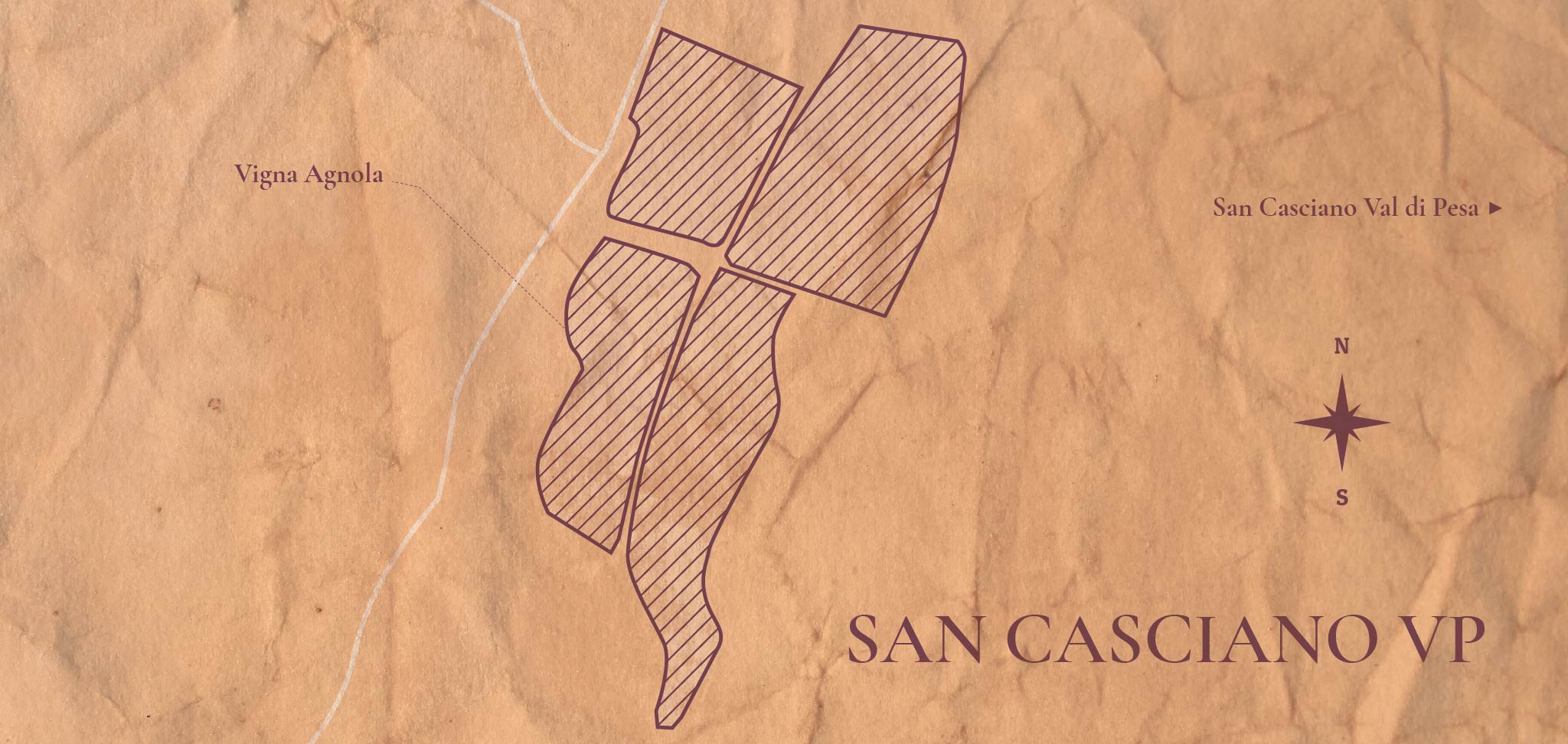
The 5 hectares of the Agnola di San Casciano vineyard, are by far the largest planting on the estate when taken as a whole.
The land, after a few years since being uprooted, was replanted in 2018. The body of the vineyard is between 211 and 267 meters above sea level on both slopes.
The soils facing O and in the opposite part facing E, still enjoy excellent sun exposure due to unobstructed irradiation. The soils are clay and limestone with the presence in the higher parts, of a myriad of pebbles and gravels that are a hallmark of this vineyard and help to warm the vines during the nighttime temperature range. The most widely used grape varieties on the estate, Sangiovese and Merlot, find their place. With a small portion of the characteristic San Colombano, as a white grape.
Tignano
Barberino - Tavarnelle (FI)
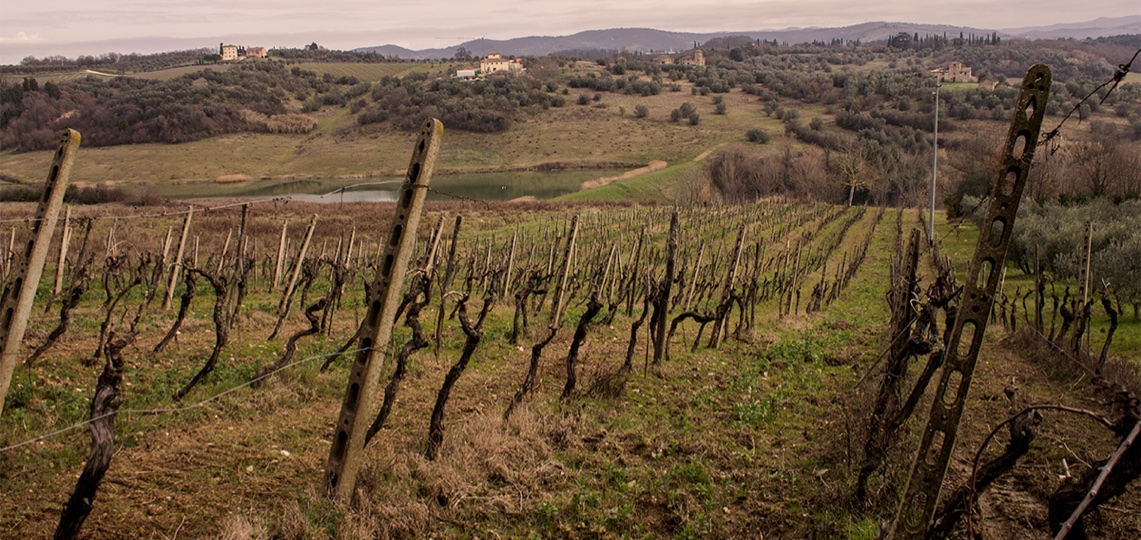
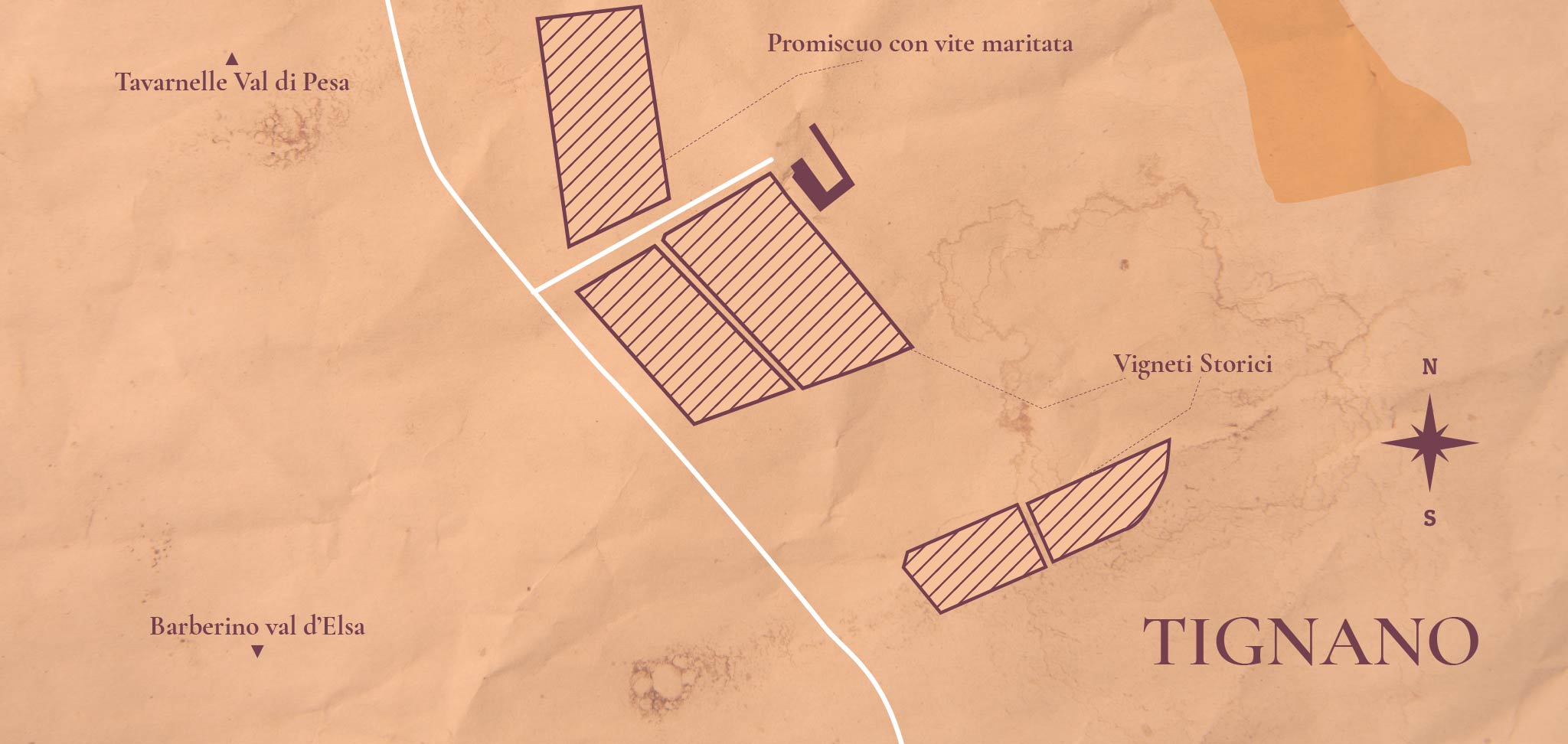
Another of the historic vineyards is located near the ancient hamlet of Tignano in the municipality of Barberino Tavarnelle. Here reside the only two vineyards that are part of the Chianti consortium appellation and from which come the grapes that make up the Chianti Pieve blend. The vineyards with strains of Sangiovese, Malvasia, and Trebbiano are divided into two main vineyards between 298 and 341 meters above sea level.
The exposure of the vineyards is between S/W and W, the soils are predominantly clayey with the presence of pebbly elements.
The setting of the training forms are related to the historicity of the vineyard and are in addition to the spurred cordon in great frequency also strains brought to Tuscan capillary or double capillary



